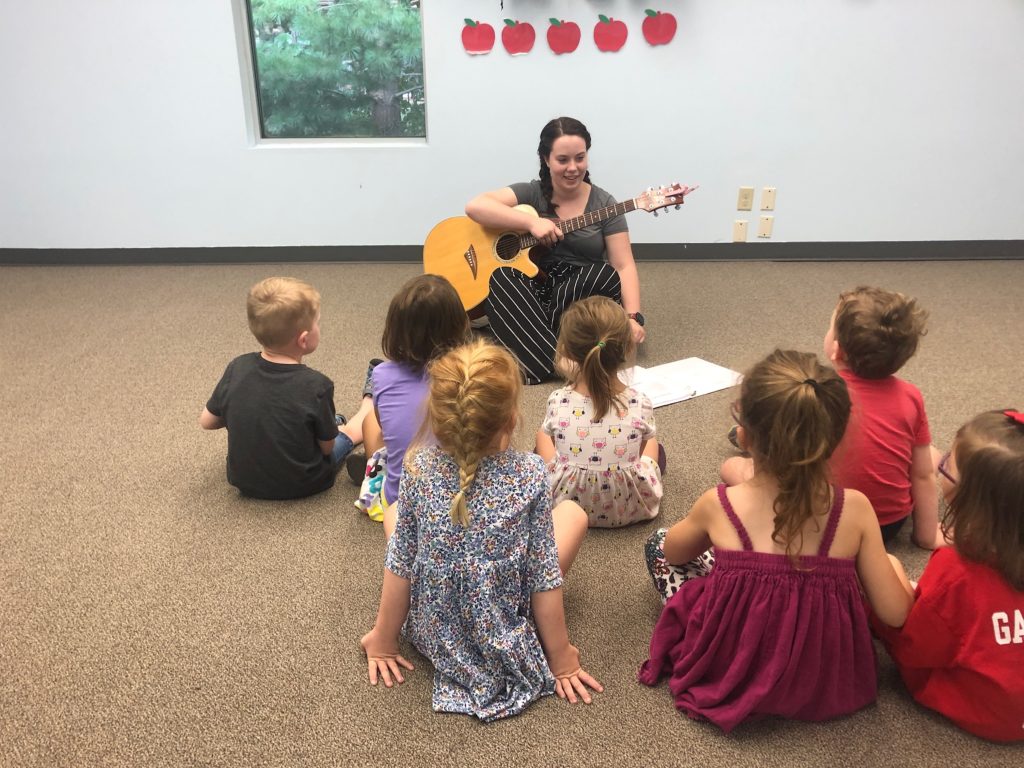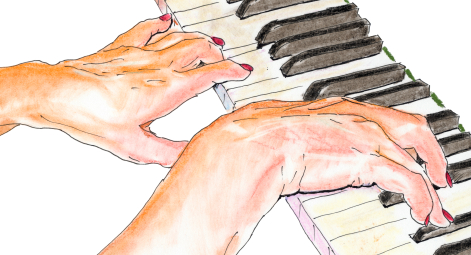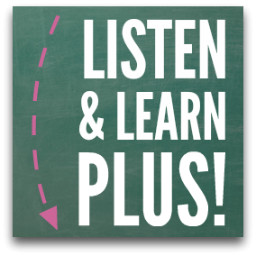
Memorizing repertoire can be a daunting task. For some people, it is incredibly difficult to do. It is time consuming. You may not even be sure if those around you care or benefit from the music being memorized or not. It can be an internal battle when deciding whether to memorize a song or not.
When teaching classes and providing music therapy sessions, memorization of pieces can be crucial to the success of an experience, or it could really not matter in the grand scheme of things. Throughout my week, I utilize three different methods: memorization, having my music off to the side, and putting the music on a stand in front of me.
Here is what I consider when deciding which setup to use.
I first ask myself these three questions:
- What is the population I am working with?
- How difficult is the piece?
- Will having the music in front of me hinder the experience?
Population
Each population is unique and has a different set of needs. If the population or group is on the energetic side, maybe consider memorizing as having other objects in the room could potentially be distracting. If they are more gentle and relaxed, a music stand may work just fine.
You might also have some participants that require hands-on attention. Needing to look at music may prohibit you from providing that. On the other hand, if your participants are quite independent, needing to use your music may be no big deal!
Difficulty
If it’s an easy piece, one shouldn’t have too much of a problem memorizing it. However, if there are lots of lyrics and the chords are unpredictable, I like to at least keep the music nearby as a safety net. The last thing you want is for your brain to be so focused on remembering the music, that you are not present with your participant(s).
Music Experience
The thorough memorization of pieces allows you to be active and present with your participant(s). This is ideal, as you can fully analyze how they are responding to the music and adapt as needed. However, having time for thorough memorization is not always realistic. When considering either having your music next to you or on a stand, it is important to think about what will be the least obtrusive to the experience.
These three questions have helped me determine what works best for me in the settings I work in. In case you were wondering, here is when I use each setup in my practice:
I truly believe that memorizing repertoire is ideal, but not always realistic. I rarely take or have the time to sit down and memorize a piece. I memorize through repetition during my sessions and classes. In other words, I usually start out with the music next to me and gradually memorize each time I sing it.
I keep my music on my iPad or in a binder to the side of me in my Listen & Learn classes, at my school contracts, and during one-on-one music therapy sessions. This gives me the freedom to glance at it when I need to, but also interact with the participants freely.
As far as utilizing a music stand goes, I really only do so with my older adults. I am not as familiar with their music preferences, and their choices can get pretty complex. Having the music in front of me is extremely helpful.
Memorization is so beneficial, but it is not the only option. What is your opinion on memorization vs. using music? How do you decide which to use?







